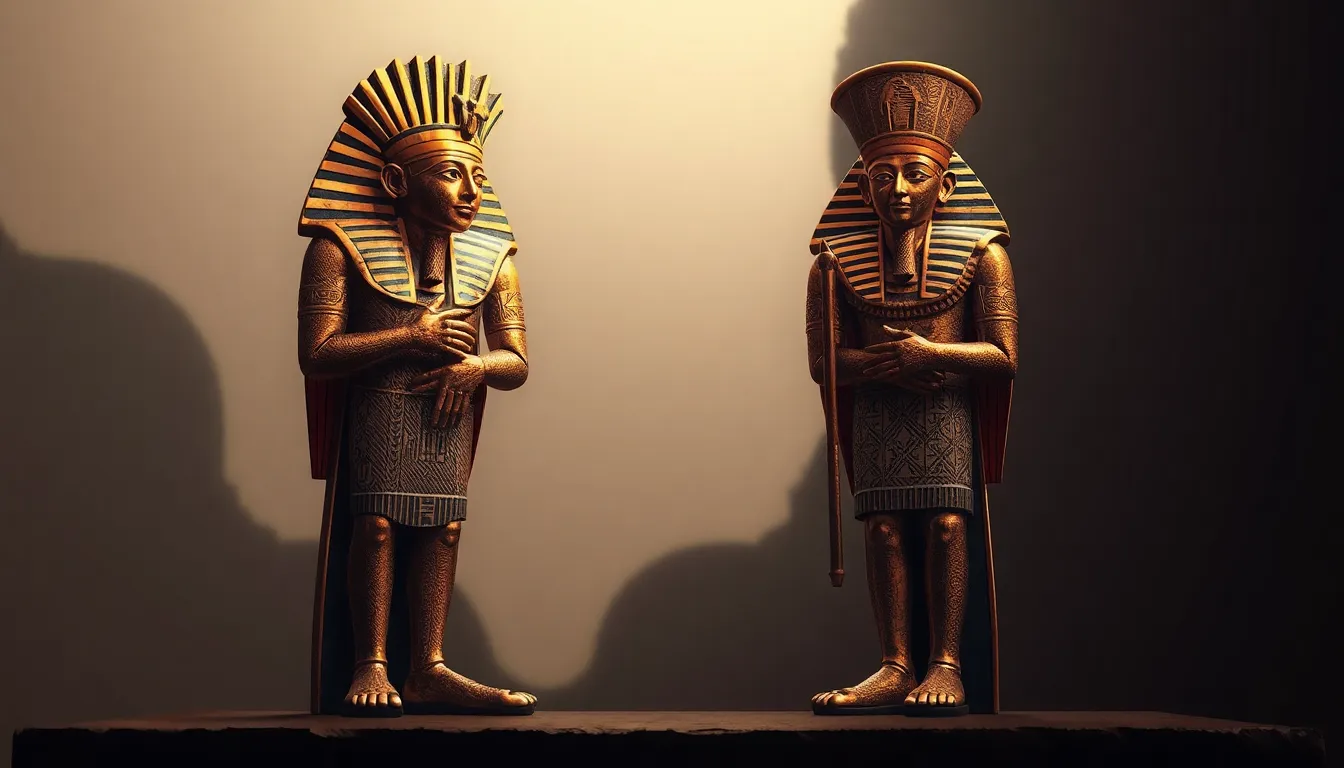Funerary Literature: A Reflection of Ancient Egyptian Values
I. Introduction
Funerary literature in ancient Egypt encompasses a variety of texts and inscriptions designed to guide the deceased through the afterlife. These texts were integral to the burial process and reflected the beliefs and values of ancient Egyptian society.
The importance of funerary texts cannot be overstated; they offered comfort to the living and ensured the deceased’s safe passage to the afterlife. This article focuses on how these texts reflect the core values of ancient Egyptian culture, including concepts of truth, morality, and the afterlife.
II. The Historical Context of Ancient Egyptian Funerary Practices
Ancient Egyptians held a strong belief in the afterlife, viewing it as a continuation of life on earth. They believed that proper funerary practices were essential for ensuring a favorable outcome in the next world.
The evolution of funerary literature can be traced through various dynasties, showcasing changes in beliefs and practices. Key texts include:
- Pyramid Texts: The oldest funerary texts, inscribed in the pyramids of the Old Kingdom, aimed at ensuring the pharaoh’s safe passage to the afterlife.
- Coffin Texts: These texts emerged in the Middle Kingdom and were available to non-royal individuals, reflecting a democratization of the afterlife.
- Book of the Dead: A collection of spells and instructions for the deceased to navigate the afterlife, prevalent in the New Kingdom.
III. Core Values Reflected in Funerary Literature
Funerary literature encapsulates several core values central to ancient Egyptian culture:
A. The Concept of Ma’at
Ma’at represents truth, balance, and order. It was a guiding principle in Egyptian life and death, emphasizing the importance of living in harmony with the universe.
B. The Significance of Immortality and the Afterlife
The belief in an eternal life was fundamental. Egyptians sought immortality through proper burial rites and the recitation of funerary texts, which promised a continuation of existence beyond death.
C. The Role of Divine Judgment and Moral Conduct
Funerary texts often included references to the judgment of the deceased by Osiris, the god of the afterlife. Individuals were expected to live morally upright lives, as their actions would be weighed against the feather of Ma’at during judgment.
IV. Symbolism and Imagery in Funerary Texts
Symbolism and imagery play a critical role in funerary literature, conveying deeper meanings and reinforcing cultural beliefs.
A. Common Symbols and Their Meanings
Various symbols were prevalent in funerary texts, including:
- Scarabs: Representing rebirth and protection.
- Ankh: Symbolizing life and immortality.
- Lotus: Signifying purity and creation.
B. The Use of Imagery to Convey Values and Beliefs
Imagery in funerary texts often depicted scenes of the afterlife, emphasizing comfort, abundance, and the continuation of life. These images served to reassure the living and guide the deceased.
C. How Symbolism Reinforces the Cultural Narrative Around Death
The rich tapestry of symbols reinforced the narrative that death was not an end but a transformation, emphasizing the values of hope and continuity.
V. Social Hierarchy and Funerary Literature
Funerary literature also reflects social hierarchies within ancient Egyptian society.
A. The Distinction Between Texts for Different Social Classes
Royalty had access to elaborate texts, while commoners often used simpler versions. This differentiation highlighted the social stratification inherent in Egyptian culture.
B. Reflection of Power and Status in Funerary Practices
The grandeur of a tomb and the quality of its inscriptions were direct reflections of an individual’s status and wealth.
C. Access to Texts and Its Implications on Societal Values
Access to funerary texts indicated one’s place in society, reinforcing the values of power and privilege in the afterlife.
VI. Rituals and Ceremonies Associated with Funerary Literature
Funerary rituals were deeply intertwined with the funerary literature, manifesting the values expressed in these texts.
A. Description of Funerary Rituals and Their Significance
Rituals included mummification, offerings, and recitations of texts to ensure the deceased’s safe passage. Each ritual had specific meanings and purposes, emphasizing respect for the dead.
B. The Role of Priests and the Religious Community
Priests played a vital role in conducting funerary rites, acting as intermediaries between the gods and the deceased. Their presence underscored the religious significance of the rituals.
C. How Rituals Manifest the Values Expressed in Literature
The rituals reinforced core values such as respect for the dead, the importance of moral conduct, and the belief in an afterlife, as outlined in the funerary texts.
VII. The Legacy of Funerary Literature in Modern Understanding
The impact of ancient Egyptian funerary literature extends into contemporary culture.
A. The Influence of Ancient Egyptian Funerary Texts on Contemporary Culture
Modern literature, art, and film continue to draw inspiration from Egyptian myths and beliefs about the afterlife.
B. How Archaeological Discoveries Have Reshaped Our Understanding
Recent archaeological discoveries have unveiled new texts and artifacts, enhancing our understanding of ancient beliefs and practices.
C. The Ongoing Relevance of These Texts in Discussions About Death and the Afterlife
Funerary texts prompt ongoing discussions about mortality, ethics, and the afterlife, making their study relevant in various academic and cultural contexts.
VIII. Conclusion
In summary, funerary literature serves as a profound reflection of the values held by ancient Egyptians. It encapsulates their beliefs about truth, morality, and the afterlife, emphasizing the importance of these concepts in their society.
Preserving and studying these texts is crucial for understanding not only ancient Egyptian culture but also the universal themes of life, death, and what lies beyond.
Ultimately, the enduring legacy of ancient Egyptian beliefs about life and death continues to influence modern perspectives, bridging the gap between past and present.




